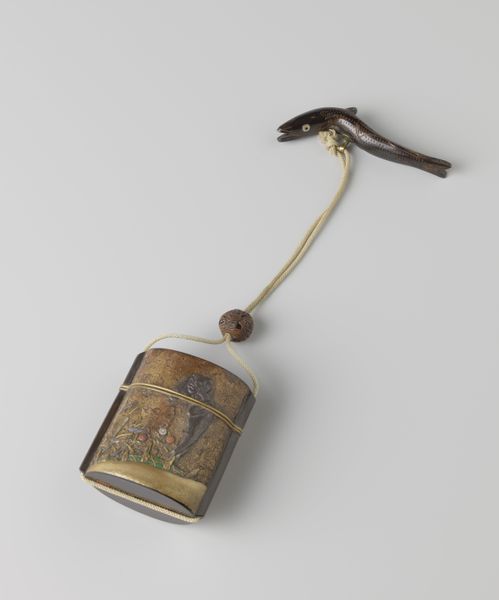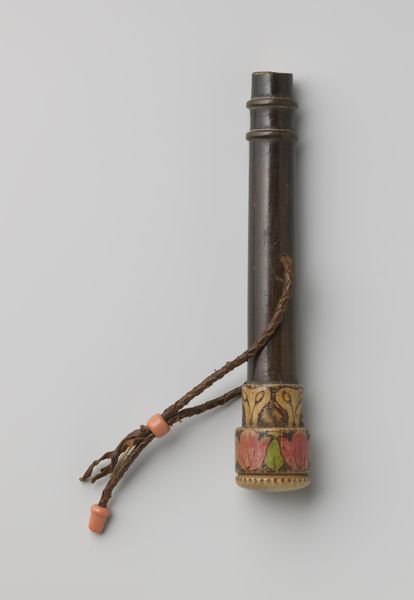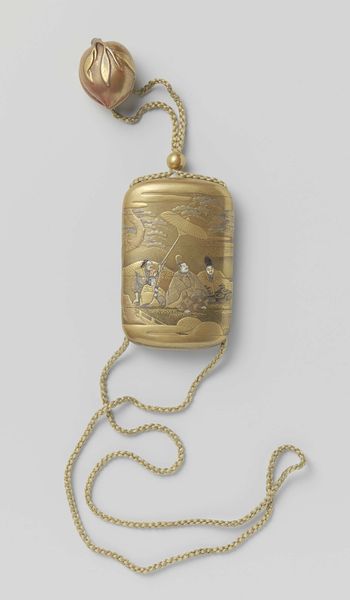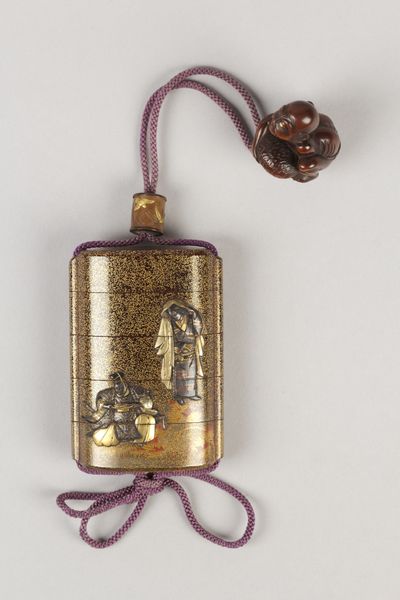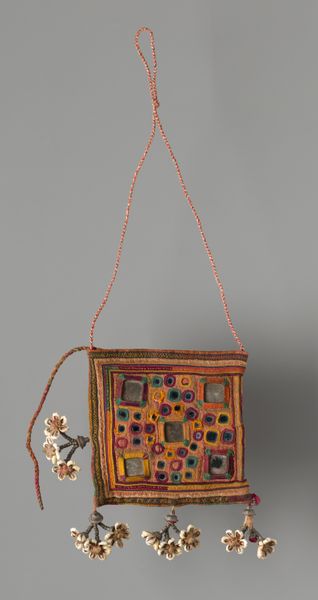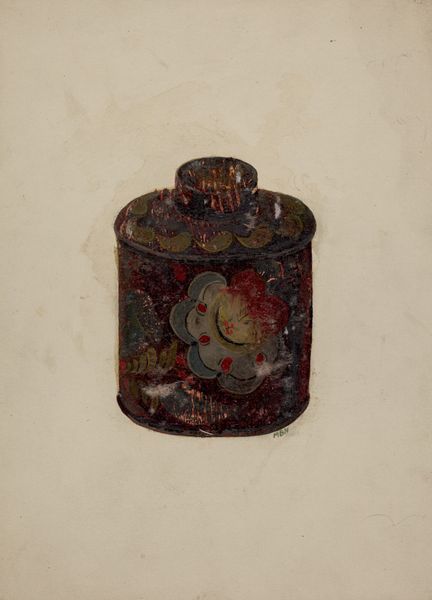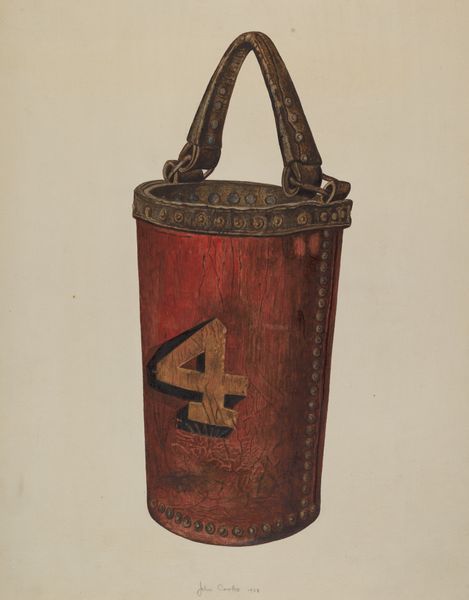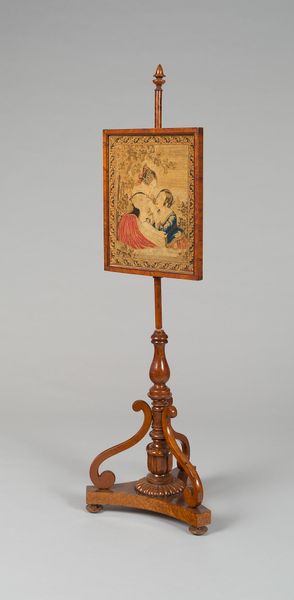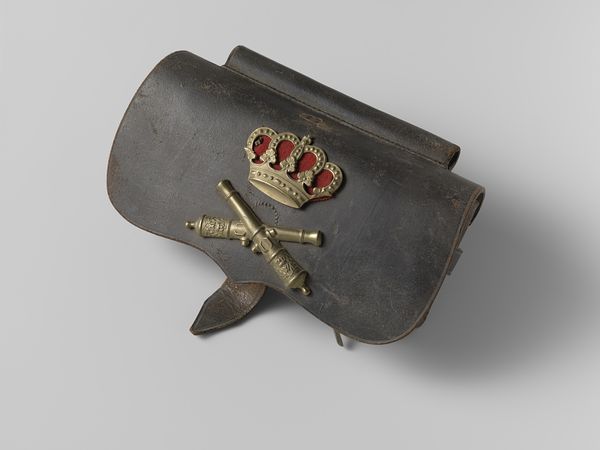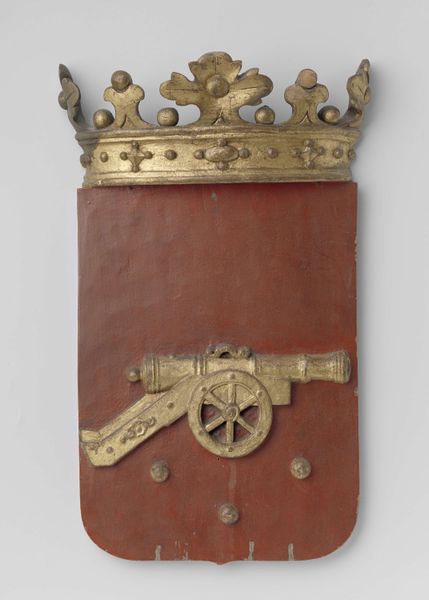
drawing, tempera, painting, ink, wood
#
drawing
#
tempera
#
painting
#
asian-art
#
japan
#
ink
#
orientalism
#
wood
#
decorative-art
#
miniature
Dimensions: H. 3 5/8 in. (9.2 cm); W. 2 3/8 in. (6 cm); D. 11/16 in. (1.8 cm)
Copyright: Public Domain
Curator: What a striking object! Before us is an Inrō, or traditional Japanese case, adorned with a design of gourd vines. This dates back to the 18th century, and the artist is Koma Yasutada. You can find this beauty at the Metropolitan Museum of Art. Editor: It's surprisingly vibrant. The red is so saturated, and those stylized gourd leaves – they feel both organic and carefully constructed. What's the material like? It appears to be wood. Curator: Indeed, it's primarily crafted from wood, with details rendered in ink, tempera, and perhaps some drawing techniques. It was designed to be functional, carried by the stylish population of the time! Editor: Carrying everyday items with so much ornamentation does seem like quite the statement. What is the gourd's relevance in this society and the overall Asian artistic framework? Curator: The gourd motif is layered with meaning. On the surface, gourds represent prosperity, abundance, and even fertility. Moreover, they symbolize a connection to nature, so often invoked in art, poetry, and design. Editor: I notice how the composition wraps around the cylindrical shape. Are there other motifs on this object, such as the red mask figure? Curator: Yes, these Inrō cases are often accompanied by a netsuke, a carved toggle, that attaches the case to the obi sash. You have a character there! We see a stylized mask, it serves both a functional and ornamental role, so the overall feel is enhanced with it! Editor: Masks can channel psychological and cultural narratives—powerful yet miniaturized. This one suggests something playful. It makes a powerful historical moment incredibly fun. Curator: Yes, there's a constant interplay between form and utility here. A mundane item elevated to an art object, infused with layers of symbolism. I believe that helps to understand our human attachment to material possessions and culture. Editor: Ultimately, viewing this Inrō is a fascinating glimpse into Edo-period aesthetics—art's accessibility as both a lifestyle choice and a reflection of the values held dear. Curator: Indeed, an embodiment of beauty woven into the fabric of daily life. It makes me ponder on the idea that symbolism speaks for cultural and social ideas.
Comments
No comments
Be the first to comment and join the conversation on the ultimate creative platform.

